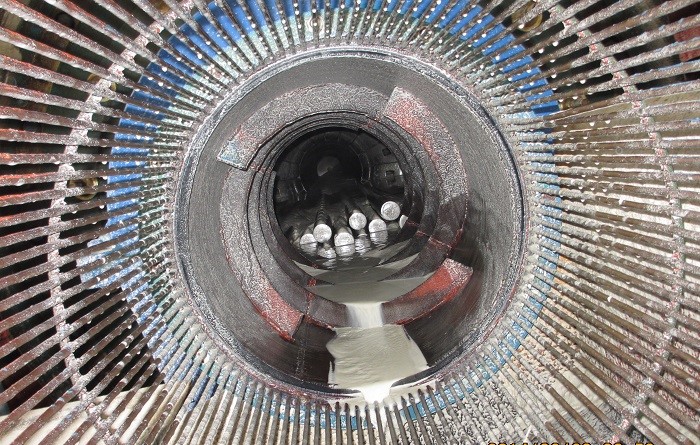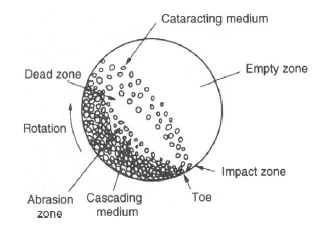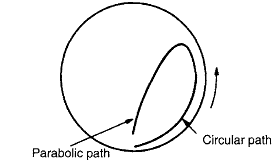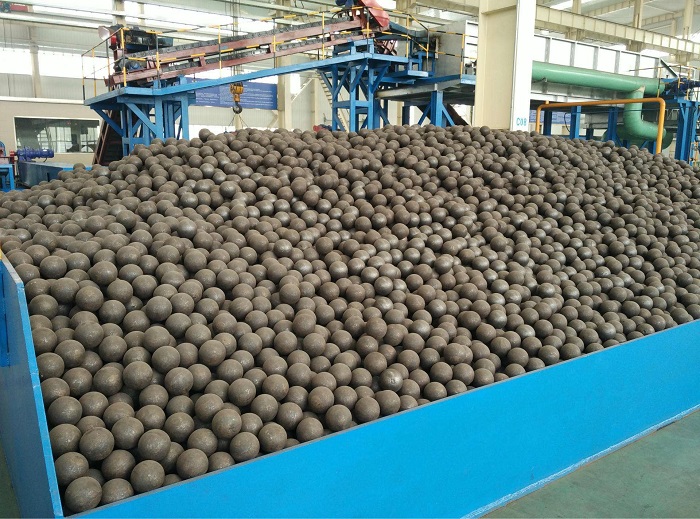The distinctive feature of ball mills is the use of loose crushing bodies, which are large, hard, and heavy in relation to the ore particles, but small in relation to the volume of the mill, and which occupy slightly less than half the volume of the mill.

Due to the rotation and friction of the ball mill shell,the grinding medium(steel ball or rod) is lifted along the rising side of the mill until a position of dynamic equilibrium is reached, when the bodies cascade and cataract down the free surface of the other bodies, about a dead zone where little movement occurs, down to the toe of the mill charge (Figure 1).

Figure1. Motion of charge in a ball mill
The speed at which a mill is run is important, since it governs the nature of the product and the amount of wear on the shell liners. For instance, a practical knowledge of the trajectories followed by the steel balls in a mill determines the speed at which it must be run in order that the descending balls shall fall on to the toe of the charge, and not on to the liner, which could lead to rapid liner wear.
The driving force of the mill is transmitted via the liner to the charge. At relatively low speeds, or with smooth liners, the medium tends to roll down to the toe of the mill and essentially abrasive comminution occurs. This cascading leads to finer grinding, with increased slimes production and increased liner wear. At higher speeds the medium is projected clear of the charge to describe a series of parabolas before landing on the toe of the charge. This cataracting leads to comminution by impact and a coarser end product with reduced liner wear. At the critical speed of the mill the theoretical trajectory of the medium is such that it would fall outside the shell. In practice, centrifuging occurs and the medium is carried around in an essentially fixed position against the shell.
In travelling around inside the mill the medium (and the large lumps of ore) follows a path which has two parts. The lifting section near to the shell liners is circular while the drop back to the toe of the mill charge is parabolic (Figure 2).

Figure 2. Trajectory of grinding medium in ball mill
Mills are driven, in practice, at speeds of 50-90% of critical speed, the choice being influenced by economic considerations. Increase in speed increases capacity, but there is little increase in efficiency above about 40-50% of the critical speed. Very low speeds are sometimes used when full mill capacity cannot be attained.

High speeds are used for high-capacity coarse grinding. Cataracting at high speeds converts the potential energy of the medium into kinetic energy of impact on the toe of the charge and does not produce as much very fine material as the abrasive grinding produced by cascading at lower speeds. It is essential, however, that the cataracting medium should fall well inside the mill charge and not directly onto the liner, thus excessively increasing steel consumption. Most of the grinding in the mill takes place at the toe of the charge, where not only is there direct impact of the cataracting medium on to the charge, but also the ore packed between the cascading medium receives the shock transmitted.
At the extreme toe of the load the descending liner continuously underruns the churning mass, and moves some of it into the main mill charge. The medium and ore particles in contact with the liners are held with more firmness than the rest of the charge due to the extra weight bearing down on them. The larger the ore particle, rod, or ball, the less likely it is to be carried to the breakaway point by the liners. The cataracting effect should thus be applied in terms of the rod or ball of largest diameter.